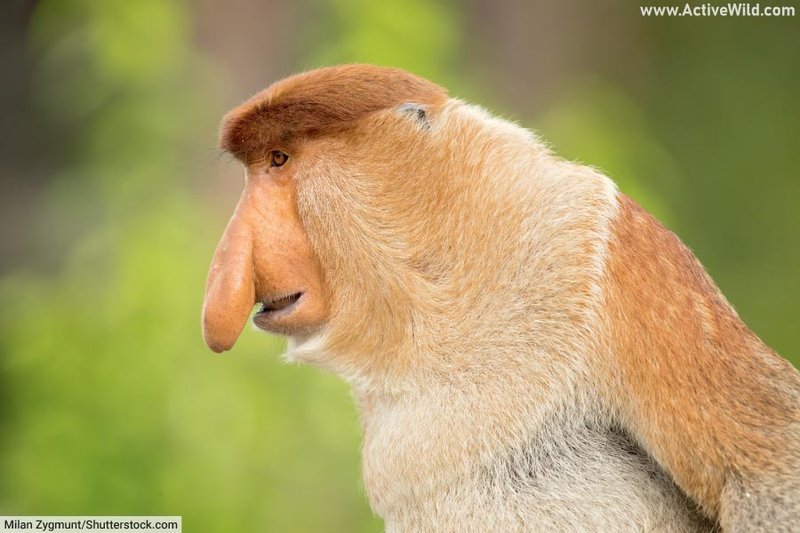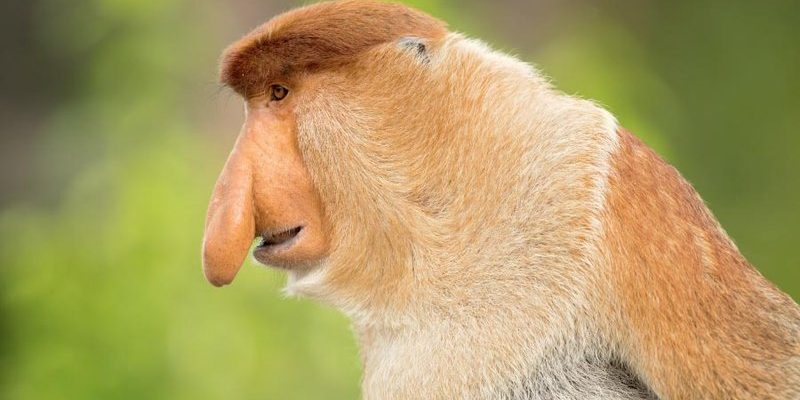
The Proboscis monkey, found mostly in the mangrove forests of Borneo, is truly a gem of the natural world. They are known for their impressive size, peculiar appearance, and interesting social dynamics. But what else makes these monkeys stand out? Let’s dive into ten captivating facts that highlight what makes the Proboscis monkey so special.
1. Unique Appearance
The most striking feature of the Proboscis monkey is, without a doubt, its large nose. Males have noses that can hang down several inches, resembling a ripe tomato! This unusual characteristic is more than just a quirk; it plays a significant role in attracting mates. The larger and more pronounced the nose, the more appealing a male is to females. It’s almost like nature’s version of a flashy sports car — a way to show off!
In addition to their noses, these monkeys have a distinctive pot-belly. This rounded belly helps them digest the leaves they eat, which are often tough and fibrous. You might think of it as their very own digestive system upgrade! All of these features combined give the Proboscis monkey a charming, if not slightly comical, look.
2. Where They Live
Proboscis monkeys are native to the dense forests of Borneo, primarily in mangrove and riverine habitats. They love regions where there’s plenty of water around, as they are excellent swimmers. Yes, you read that right! These monkeys can often be seen leaping from trees into the river below, making a splash as they go. Their unique adaptations allow them to thrive in these specific environments.
The forests they inhabit are increasingly threatened by deforestation and habitat loss due to agriculture and logging. This means that conservation efforts are vital to ensuring that these remarkable monkeys continue to thrive in their natural settings.
3. Social Structures
Proboscis monkeys are social animals, living in groups called hordes. A horde typically consists of around 10 to 30 individuals, structured with one dominant male and several females. The dominant male might sound like the head honcho, but his role is crucial for the group’s survival and social dynamics. He helps protect the group and keeps order, ensuring that everyone knows their place.
These social dynamics are fascinating. When the dominant male is threatened or challenged, he will put on a show, puffing up his chest and making loud calls to assert his position. It’s like a weightlifting contest but in the monkey world! And if he loses, another male might take his place, showcasing the fluid nature of their social hierarchy.
4. Diet and Feeding Habits
You might be wondering what a Proboscis monkey eats, given their unique digestive systems. These monkeys are herbivores, primarily munching on leaves, fruits, seeds, and flowers. They especially love young leaves, which are easier to digest. This diet helps them thrive, even in the less nutrient-rich environments of their home.
Interestingly, their stomachs are equipped with special adaptations to break down cellulose, allowing them to extract maximum nutrients from tough vegetation. Picture it as having a gourmet kitchen in their bellies! This makes them one of the few primates that can successfully digest such fibrous foods.
5. Vocalizations and Communication
Proboscis monkeys are known for their loud and distinctive calls, often referred to as “honks.” These vocalizations can carry through the jungle, making it easier for group members to communicate and stay connected. The males have especially deep voices, which can sound quite impressive.
These calls serve several purposes, from signaling danger to attracting mates. So next time you hear a strange honking noise in the wild, it might just be a group of these charming monkeys chatting away!
6. Conservation Status
Sadly, the Proboscis monkey is considered endangered due to habitat loss and hunting. As their forest homes disappear, their populations decline. Conservationists are working tirelessly to protect these monkeys and their habitats by creating reserves and promoting sustainable land use.
You can think of conservation efforts like setting up a safe haven for them, ensuring they have a place to thrive. This is crucial not only for the monkeys but for the entire ecosystem they help sustain.
7. Incredible Swimmers
One of the most surprising facts about Proboscis monkeys is their swimming ability. Unlike many other primates, they love to dive into the water. Their long arms and webbed hands help them paddle efficiently, making it easier to navigate through rivers and streams.
This swimming skill isn’t just for fun; it’s also a smart survival tactic. When threatened by predators, they can make a quick escape by jumping into the water. This adaptability showcases their resilience and resourcefulness in the wild.
8. Reproductive Behaviors
When it comes to mating, Proboscis monkeys have some intriguing behaviors. Males engage in various displays to attract females, including vocalizations and showcasing their impressive noses. Once a female is interested, she and the male may engage in courtship behaviors, such as grooming and playful interactions.
After a gestation period of around five months, the female gives birth to a single baby, which she cares for diligently. It’s heartwarming to imagine these mothers nurturing their little ones as they grow up in the vibrant tapestry of their forest home.
9. Interactions with Other Species
In their natural habitats, Proboscis monkeys share their space with various other species. They interact with animals like birds, snakes, and even other monkeys, creating a dynamic ecosystem. This interaction can sometimes lead to competition for food, but it also shows the balance of nature at work.
Proboscis monkeys often forage in trees that provide food for many other species. This interconnectedness highlights the importance of preserving their habitats—not just for their sake but for the entire ecosystem.
10. Fun Facts and Quirks
Here’s where things get even more interesting! Did you know that Proboscis monkeys can leap distances of up to 50 feet? That’s like jumping across a small river in one bound! They also have a unique social grooming behavior. This isn’t just about keeping clean; it strengthens bonds within the group, which is essential for their social structure.
Another quirky fact is their sometimes clumsy appearance. With their long limbs and large noses, they might look a bit silly as they navigate their forest home. But this charm is part of what makes them so endearing!
In conclusion, the Proboscis monkey is a truly fascinating creature with its unique features, social behavior, and vulnerable status. Understanding these quirky monkeys not only deepens our appreciation for them but also highlights the importance of protecting their environment. Next time you come across a picture or story about these charming creatures, you’ll have a treasure trove of facts to share!

